
Tour Code: IFH-NJ-05
Tour days: 6 Days
Enjoy an unforgettabble holiday on our 6-day tour from Nanjing to Yangzhou, a fantastic opportunity to take in incredible scenery, history, culture and Yummy food.
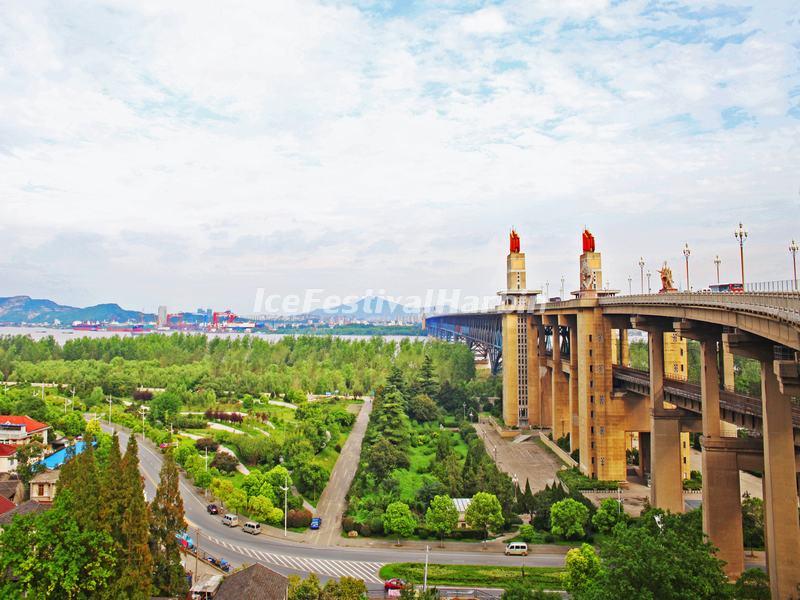
Transfer via: flight - your arrangement
Activities for today: airport transfer, Yangtze River Bridge
Meet your guide and transfer to your hotel. If time permits, vist the Yangtze River Bridge.
N.B. If you want to see the Yangtze River Bridge, we recommend that you select flights which arrive in Nanjing before 15:50 pm
-Yangtze River Bridge
The bridge flies over Yangtze River, northwest of the city. It was the first double deck and double track highway and railway bridge designed and constructed by Chinese themselves. As a milestone, it was Chinese people's pride.
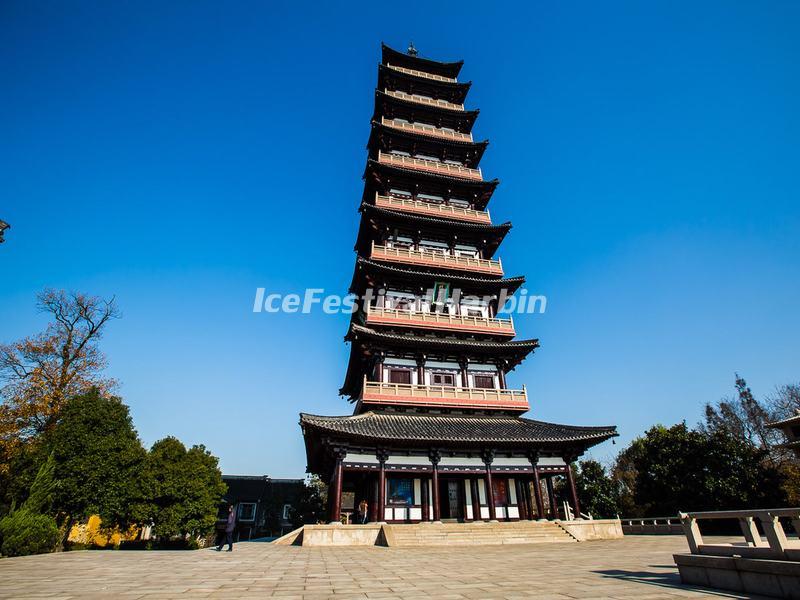
Transfer via: private vehicle
Activities for today: Slim West Lake, Ge Garden, Daming Temple, Dongguan Street
Today make an excursion to Yangzhou City to visit Slim West Lake, Ge Garden, Daming Temple, and Dongguan Street. Drive back to Nanjing.
-Slim West Lake
Slim West Lake is a man-made lake where beautiful views and historic points coexist. The lake is a state-level scenic resort and gets its name because its outline is long and narrow like a slender, gentle girl. Walking along the lake, your can see many elegant styles of architectures. They all possess different kinds of beauty.
-Ge Garden
Designed by the great Qing Dynasty landscape painter Shi Tao for Wang Yingtai, an officer of the Qing imperial court, his typical southern style garden with luxuriant bamboo groves, ponds, and rock grottoes. It is one of the peaceful places to visit in Yangzhou.
-Daming Temple
The original temple was built in Liu Song Dynasty (420–479). A nine-story pagoda, the Qiling Pagoda, was built on the temple grounds in the year of Sui Dynasty (589–618). A recent addition to the temple complex is the Jian Zhen Memorial Hall, built according to Tang Dynasty methods and financed with contributions raised by Buddhist groups in Japan. When Qing Emperor Qian Long visited Yangzhou in 1765, he was troubled by The temple's name Daming (which literally means "Great Ming') fearing that it might revive nostalgia for the Ming Dynasty, which was overthrown by his Manchu predecessors. He had it renamed Fajing Temple. The temple was seriously damaged during the Taiping Rebellion at the beginning of the 20th century. The present structure is a reconstruction dating from the 1930s.
-Dongguan Street
Dongguan Street is an ancient alley in the center of Yangzhou.There are many shops here that are old and a large number of monuments and heritages. Everything here maintains the characteristics of the Ming and Qing Dynasty.
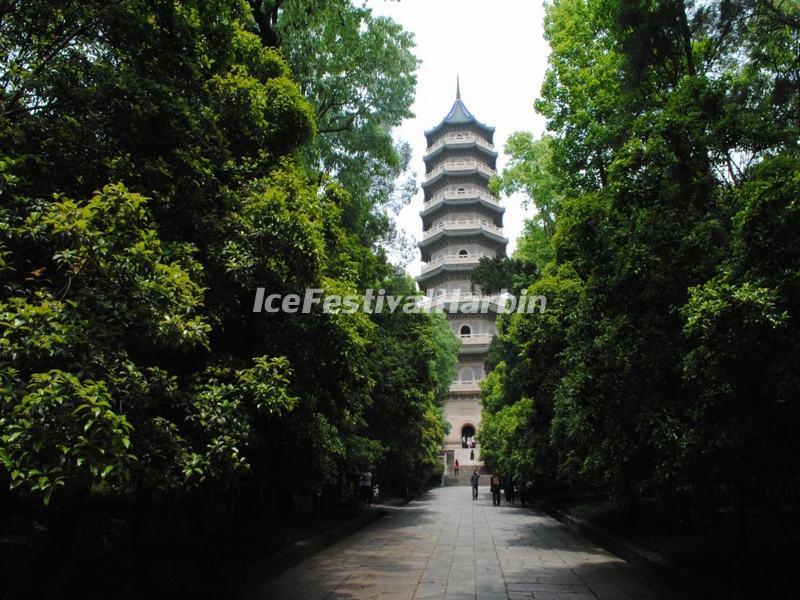
Transfer via: private vehicle
Activities for today: Dr. Sun Yat-sen's Mausoleum, Ming Xiaoling Mausoleum, Linggu Temple
Enjoy a full day tour of Dr. Sun Yat-sen's Mausoleum, Ming Xiaoling Mausoleum and Linggu Temple.
-Dr. Sun Yat-sen's Mausoleum
Dr.Sun Yat Sen’s mausoleum is situated at the foot of the second peak of Mount Zijin (Purple Mountain). Construction of the tomb started in 1926, taking three years. On first July 1929, Dr. Sun was buried there. Sun has been respected as Father of Modern China since he fought unyieldingly against the corrupt Qing government and led the 1911 revolution to end feudal system and found Republic of China, leading Chinese people into a new era.
-Ming Xiaoling Mausoleum
The Ming Xiaoling Mausoleum is the tomb of the Hongwu Emperor, the founder of the Ming dynasty. The mausoleum is renowned for its unique design, its eminent status, its amazing beauty and its magnificent scale. It's the milestone in the historical development of Chinese mausoleums. As an extension of the 'Imperial Tombs of the Ming and Qing Dynasties, it is listed by UNESCO as a world cultural heritage site.
-Linggu Temple
Described as "the best Buddhist temple in the world", Linggu Temple was first built in 515 during the Liang dynasty (502-557). It used to lie at the northeast foot of the Purple Mountain, i.e. where the Ming Xiaoling Mausoleum is located, since the Hongwu Emperor of the Ming dynasty (1368–1644) chose the place to be his mausoleum and then the temple was moved to the present place. The temple was named by the Hongwu Emperor himself. It used to be large and covered an area of over 300,000 square metres. Later it was destroyed in warfare during the reign of the Xianfeng Emperor in the Qing dynasty (1644–1911) and rebuilt during the reign of the Tongzhi Emperor. In the temple, except for buddhas and bodhisattvas, Xuanzang and his relics were enshrined and worshipped.
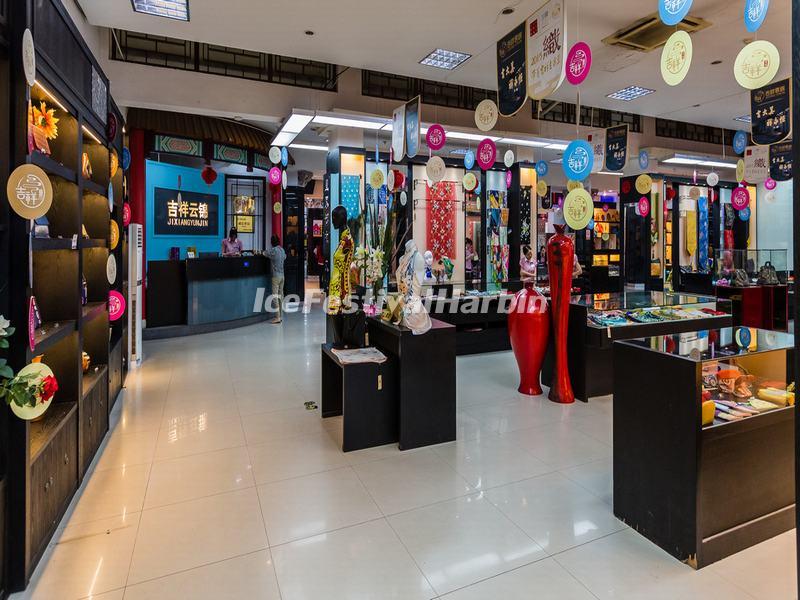
Transfer via: private vehicle
Activities for today: Presidential Palace, Xu Garden, Jiangning Imperial Silk Manufacturing Museum, Memorial Hall of the Victims in Nanjing Massacre by Japanese Invaders, Nanjing Yunjin Museum of China
Today enjoy a full day tour of the Presidential Palace (It is now a museum called the China Modern History Museum), Xu Garden, Jiangning Imperial Silk Manufacturing Museum, Memorial Hall of the Victims in Nanjing Massacre by Japanese Invaders and the Nanjing Yunjin Museum of China.
-Presidential Palace
The Presidential Palace housed the Office of the President of the Republic of China before the republic relocated to Taiwan in 1949. It is now a museum, the China Modern History Museum. It is located at 292 Changjiang Road, in the Xuanwu District of Nanjing.
-Xu Garden
Xu Garden, also called West Garden, is located on the west side of the Presidential Palace. It is the best-preserved south watery landscape in late Qing Dynasty and a masterpiece of southern watery landscape.
-Jiangning Imperial Silk Manufacturing Museum
Built in 2003, it is situated in the ruins of "Jiangning Imperial Silk Manufacturing" from the Qing Dynasty, which was a government-run institution specializing in the manufacture of silk fabrics for the exclusive usage of royal families and officials. The ruins contained a residence and government office of supervisor officials and a weaving factory producing silk fabrics. It was also the temporary royal dwelling palace in the Qing Dynasty. A very famous Chinese novel writer Mr. Cao Xueqing was born and lived here during his childhood as well when his family managed the manufacturing institution for nearly 60 years.
-Memorial Hall of the Victims in Nanjing Massacre by Japanese Invaders
The Memorial Hall of the Victims in Nanjing Massacre by Japanese Invaders is a museum to memorialize those that were killed in the Nanjing Massacre by the Imperial Japanese Army in and around the then capital of China, Nanjing, after it fell on December 13, 1937.
-Nanjing Yunjin Museum of China
The Nanjing Yunjin Museum which hosts the Nanjing Brocade Research Institute established in 1982. Here it's possible to see how the famous Yunjin brocade was born and witness some of the few incredibly skilled people still performing this topmost craftsmanship using the same loom of the Song Dynasty (960-1279). There are many different kinds of brocade, Yunjin is one of the three most famous in China. The product is a fine silk brocade produced and sold mainly in Nanjing. It's name Yunjin comes from the cloud-like colors and patterns of this borcade and the legend of a beautiful princess coming from the sky.

Transfer via: private vehicle
Activities for today: Zhonghua City Gate, Zhan Garden, Taiping Heavenly Kingdom History Museum, Confucian Temple, Wuyi Lane, Qinhuai River
Today have a full day tour of Zhonghua City Gate, Zhan Garden, Taiping Heavenly Kingdom History Museum, Confucian Temple (Fuzimiao), and Wuyi Lane. In the evening, take the painted boat to cruise on the Qinhuai River to enjoy the beautiful night scenery.
-Zhonghua City Gate
Zhonghua Gate,means Chinese gate, was the biggest and most splendid city gate of Nanjing city wall in the Ming dynasty. The gate was built from 1366 to 1386 and originally named Gate of Gathering Treasure, since legend says in the construction, the wall collapsed again and again before a Box of Gathering Treasure was buried under. The whole structure was built with huge bricks and special cement made from lime, tung oil and sticky rice juice, extraordinarily strong.
-Zhan Garden
Zhanyuan Garden is the only well preserved Ming-style architectural complex with the longest history in Nanjing City. It is regarded as one of the top four most famous gardens in South of China, the other three are Jichang Garden in Wuxi, Humble Administrator Garden and Lingering Garden in Suzhou.
-Taiping Heavenly Kingdom History Museum
It is located on the grounds of the Zhan Garden. The museum has artifacts from the rebellion, including Taiping currency, weapons, uniforms, and documents about the Taiping Heavenly Kingdom ideology, which was based upon an idiosyncratic version of Christianity
-Confucian Temple
Originally constructed in the year of 1034 in the Song Dynasty, the Confucius Temple in Nanjing is a place to worship and consecrate Confucius, a great philosopher and educator of ancient China.
-Wuyi Lane
Wuyi Lane is located on the south side of Qinhuai River in Nanjing. It is the most famous historical ancient lane in China. During the Three Kingdoms period, it was the barracks of the army guarding the Stone City of Wu. The name Wuyi means black clothes. This was because the non-commissioned officers at that time always dress in black. Later the aristocrats of Eastern Jin (317-420) gradually assembled at Wuyi Lane, making it popular and famous. In addition, Wang Dao and Xie An, the two founding fathers of Eastern Jin, once lived here.
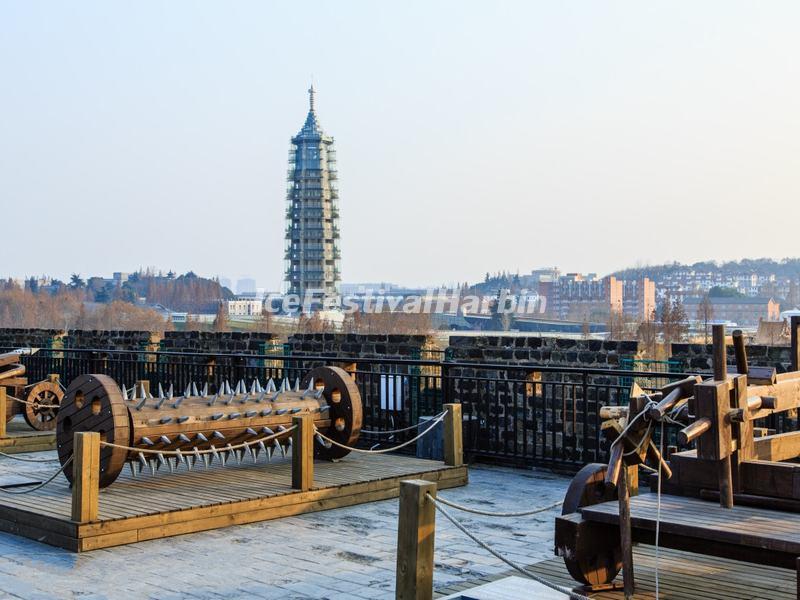
Transfer via: flight - your arrangement
Activities for today: Dabao'en Temple, Xuanwu Lake, airport transfer
Morning tour Dabao'en Temple (Temple of Repaid Gratitude)and Xuanwu Lake. After 14:00, transfer to the airport on time to board the flight for onward destination.
-Xuanwu lake
The lake lies northeast of the city near the railway station, out of the city wall. It used to be the drilling camp of the imperial navy and recreation center of aristocrats. At the end of the Qing dynasty, it was turned into a park.